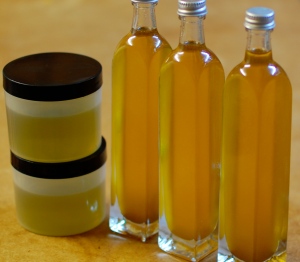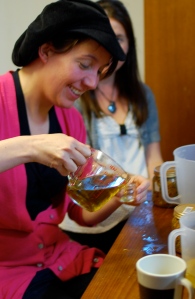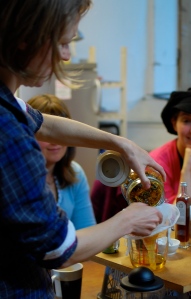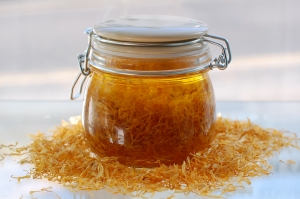This year I decided to choose a plant to work with closely through the changing seasons in order to get to know it deeply and help me to incorporate some of the concepts of Geothean observation into my work with plants. When finding a new plant ally the idea is to be chosen rather than to choose, to see which plants grab your attention and won’t let go and then honour that choosing, whether you get what you expected or not.
Well I certainly didn’t expect Comfrey, partly because it’s a plant I don’t often work with and partly because I had several other plants around me that I consider close allies and was expecting to be ‘chosen by’. I’ve been interested in the idea of Goethean observation for some time as it seemed to me a wonderful way of honing our senses, learning about plants and moving beyond ourselves and our limited perceptions to connect to the wider world around us.
Goethe is best known for his literary contributions but, in fact, he was involved in the sciences too for much of his life. His work with plants was so unconventional at the time because he choose to study the species around him in their living environment, rather than dead herbarium specimens, so he could understand how they adapt and change throughout time. This idea of the ‘time-life’ of a phenomenon is a key principle of the Goethean study of plant life, helping us to understand them as changing, adaptive beings rather than something static or objectified. In this way we can be participants, rather than merely observers in their dance of becoming. The idea is to observe the plant as clearly as possible, using all our faculties, blending what Goethe called exact sense perception, or collecting all the available facts, with exact sensorial fantasy, or understanding the growth, metamorphosis and flow of a plant through a more fluid and imaginative process.
As we progress with these practices we move to a space where we can be completely open, allowing the plant to reveal something of its true nature to us through idea and inspiration. The final part of the process is described as being one with the object of perception, allowing a kind of divine meeting that Steiner referred to as “the true communion of mankind.” Drawing is seen as a useful tool in the process because it encourages us to consider all the details before us, exactly as they are experienced, rather than writing on our own perceptions.
My original plan, to draw my comfrey every day throughout the year, has proven a little too time intensive in my ever busy schedule, so I’ve settled for sitting with her every day and drawing when things are a bit less busy. Only a couple of months into the process, it has already been a remarkable one.
One of my first, and strongest, inspirations was what I perceived to be a beautiful example of the doctrine of signatures in the leaf of the Comfrey. Comfrey is best known as a cell proliferant, due to its allantoin content, which resulted in its traditional use as a healer for broken bones, strains and skin conditions, among other things. As many of you will know, its folk name was ‘knitbone’ reflecting this ability. However Comfrey is no longer recommended for internal use (though it’s still fine externally on unbroken skin) due to other constituents known as pyrrolizidine alkaloids, some of which may lead to hepatic veno-occlusive liver disease. In Paul Bergner’s interesting piece on the subject, which you can view here, he explains that, “In HVOD, the cells lining the veins in the liver proliferate and choke off the veins.”
Now it may seem a little simplistic to apply the doctrine of signatures here, but to me, something in the leaves of the comfrey shows us very clearly both how it heals and how it harms, though cell proliferation, despite the fact that these actions are due to completely different chemical constituents in either case. Observe how the markings look just like cells under magnification, stacked one on top of another, growing strong and vital.
Steiner writes “The human being cannot demand any other kind of knowledge than the one he brings forth himself.” I find this quote so empowering. It can be a challenge to trust our own inspirations and observations when working with plants and it’s so important to learn about their traditional and modern uses to get as wide a background as possible. That done however, we can start to enter into a new and less linear process, one that allows a state of inter-being to arise between ourselves and our green allies and allows whole new levels of understanding to permeate and transform our work and ourselves.








